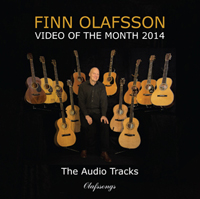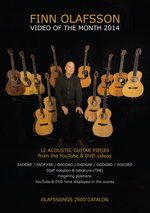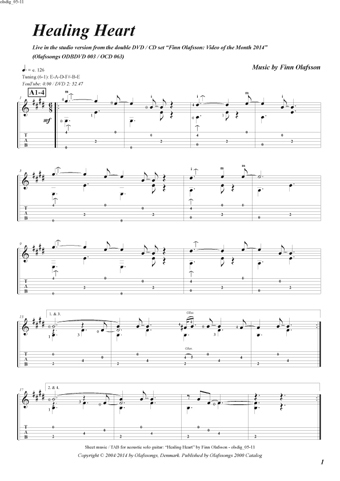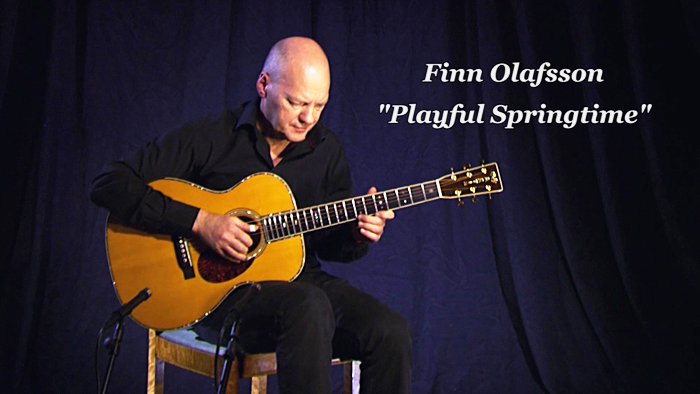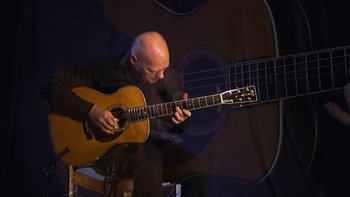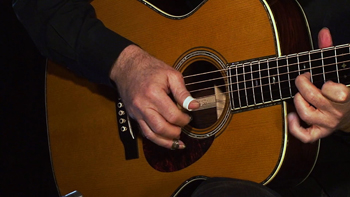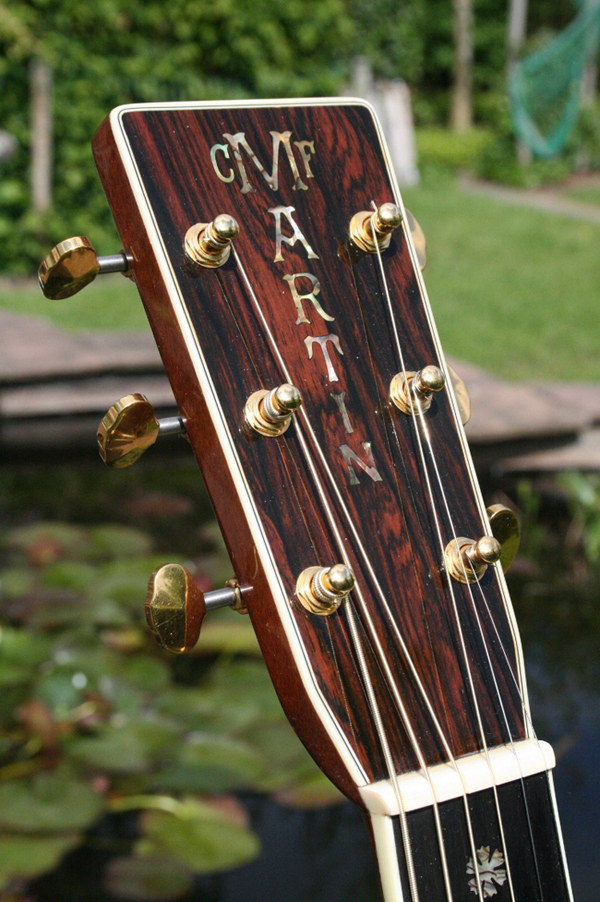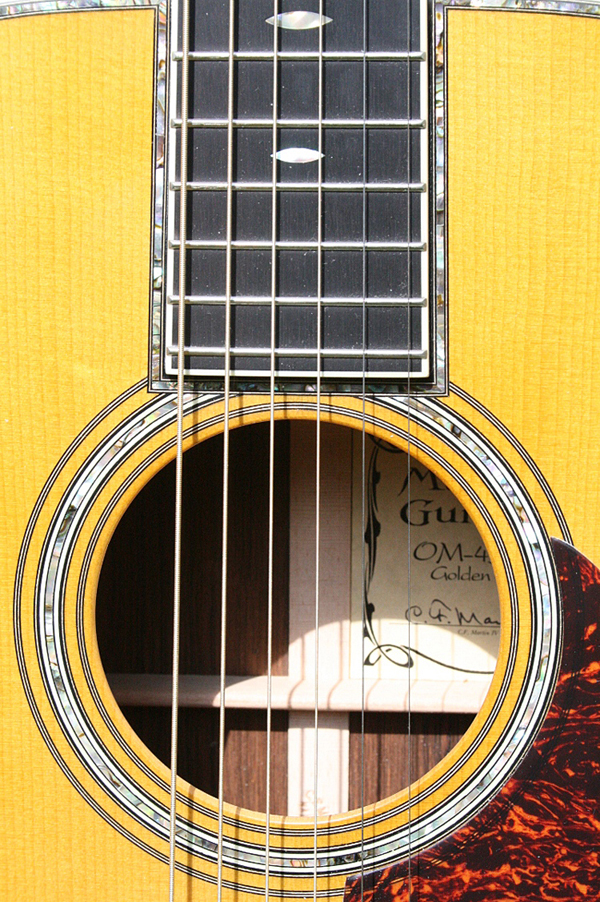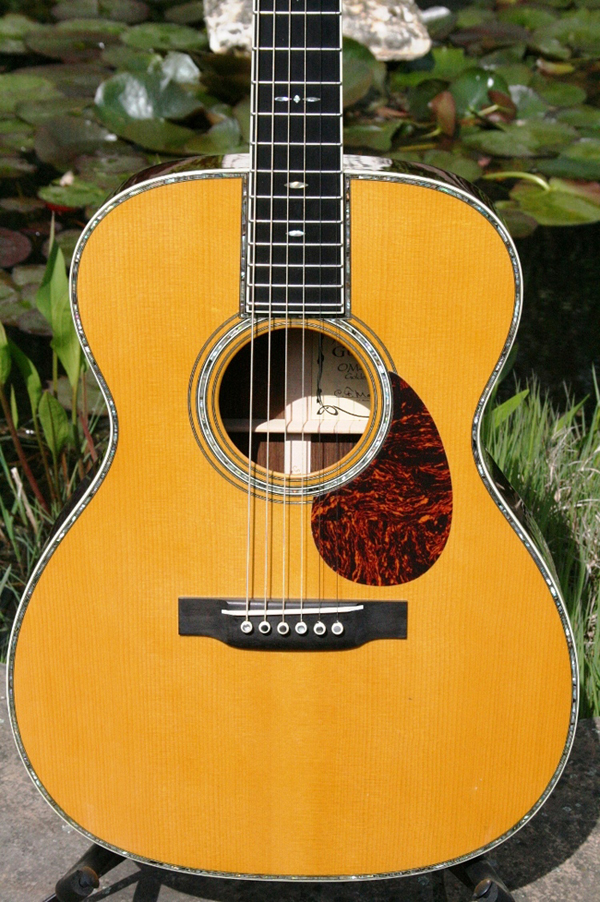|
I'm playing a 2001 C.F. Martin OM-45 GE 1933 Golden Era in this video. The Martin OM model is very suitable for my
style of playing - as it is for many acoustic guitar players around the world. The shape of the guitar makes it very balanced both tonally, physically and visually.
The OM model had its debut in 1930 after the guitarist and banjo player Perry Bechtel had visited the Martin
factory. He requested an acoustic guitar with a longer and slimmer neck and with 14 frets to the body instead
of only 12, because he wanted to be able to switch easily between banjo and guitar. Bechtel also asked for a
small pickguard. Martin took the 12 fret 000 as the bench mark, shortened the body so that the body met the 14th
fret, and moved the soundhole and bridge up. Martin also opted for a solid headstock and chose the long scale of
25.4 inches (65.5 cm) which was common on the 12 fretted 000 model at the time.
Bechtel's prototype was called "000-28 Special" just as 11 similar guitars crafted at the end of 1929 were also
entitled "000". However, soon afterwards this long-necked and long-scaled model was called an "Orchestra Model"
- or just "OM".
It's worth noticing that the 14 fret model called "000" is a short scaled guitar (24.9 inches / 63.25 cm) with
exactly the same body as the OM.
According to the publication about C.F. Martin Guitars, "A Technical Reference" by Richard Johnston and Dick Boak
(Revised and updated from the original by Mike Longworth), the first OM-45 guitars were listed on Martin's sales
lists from 1930-1933. During those four years, 40 OM-45s were sold but Dick Boak has recently explained that one
of these was an OM-45 Deluxe for Roy Rodgers and another a Hawaiian OM-45H - meaning that only 38 "normal"
OM-45s were sold. Of these 38 only 6 were sold in 1933 (at the price of USD 170). For four decades the OM-45 was
then deleted from the lists until 1977 when the OM-45 was reintroduced on special-order basis and again appeared on price lists in 1978 in
an Indian Rosewood version (at USD 2.600). It was deleted again from the lists in 1994.
The OM-45 GE Golden Era (Brazilian Rosewood/Adirondack) was added in 1998 as a Special Edition (16 guitars sold)
and was listed as OM-45 GE 1933 Golden Era from 1999. From 2000-2005 123 were sold.
One of these is the one I play in the video.
• To the top
|
The "Golden Era" term refers to C.F. Martin's Golden Era period which most collectors state is dating back to the production years from 1929-1942. The "Golden Era" line was given vintage appointments such as Brazilian rosewood for GE models higher than Style 28, Adirondack spruce tops with scalloped braces, wider 1 ¾ inches (44,45 mm) modified V neck, wider string spacing at the bridge, golden era snowflake fingerboard inlays - and many other features taken from the 1933 OM-45.
All in all it's a guitar of very high quality with a great balance and an overwhelming richness of overtones. A tune like "Playful Springtime", with all these short and fast notes, doesn't really tell the full story of this guitar's abilities. But I hope, despite this, that you sense the power and energy of this fine instrument.
I do agree with Rudi Bults at The Fellowship of Acoustics in Holland, who often claims that C.F. Martin Guitars for the last two decades or so have been, and still are, in a new "Golden Era" period, while producing very excellent guitars - not least from the Martin Custom Shop.
With reference and thanks to the following publications - warmly recommended:
Martin Guitars - A Technical Reference - by Richard Johnston and Dick Boak (Revised and updated from the original by Mike Longworth) - ISBN 978-1-4234-3982-0
Martin Guitars - A History - by Richard Johnston and Dick Boak (Revised and updated from the original by Mike Longworth) - ISBN 978-0-634-03785-6
Martin Guitars - An illustrated Celebration to America's Premier Guitarmaker" by Jim Washburn & Richard Johnston - ISBN 0-7621-0174-1
Pictures of the guitar courtesy of The Fellowship of Acoustics, The Netherlands.
• Buy CDs & DVDs featuring Finn Olafsson online at:
www.shop.olafssongs.dk
• Back to the main menu
|

